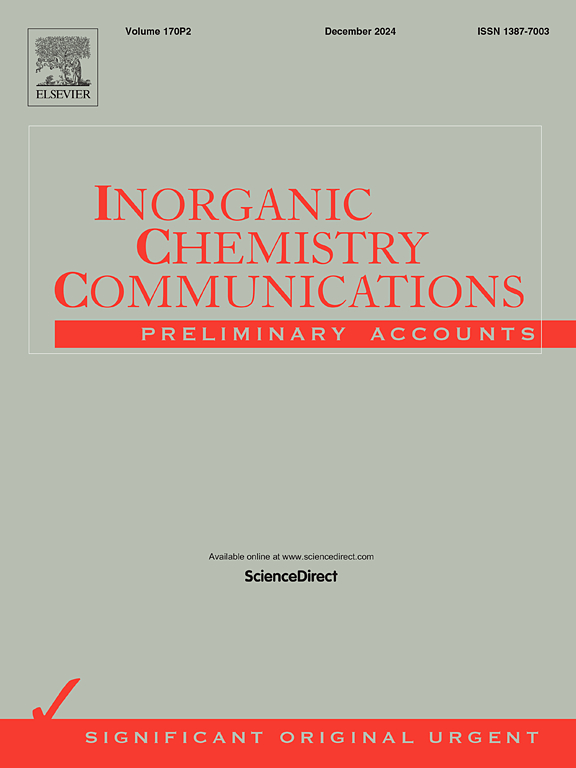Flower-spherical Ag-Bi2WO6 photocatalytic degradation of sulfamethazine
IF 4.4
3区 化学
Q1 CHEMISTRY, INORGANIC & NUCLEAR
引用次数: 0
Abstract
5 %A-Bi2WO6 (5 %A-BW) photocatalysts with a flower-spherical structure were synthesised by hydrothermal technique at 120 °C for 24 h. This photocatalyst was used to degrade sulfamethazine in wastewater. It was found that 50 ml of sulfamethazine at a concentration of 5 mg/L and pH 6.0 was degraded by 92.7 % when 25 mg of the 5 % A-BW sample underwent exposure to a 500-watt Xenon light at the wavelength of 420 nm for 90 min. This is a 47.7 % improvement over the degradation rate of Bi2WO6 (0 % A-BW). This improvement was credited to the efficient inhibition of photogenerated e−-h+ pair recombination by Ag doping, which enhanced photocatalysis. Through the analysis of ESR characterization and quenching studies, it can be determined that ![]() O2−,
O2−, ![]() OH and h+ all contribute to the photocatalytic process, with
OH and h+ all contribute to the photocatalytic process, with ![]() O2− playing the largest role. In conclusion, the 5 % A-BW composites exhibited excellent photocatalytic activity, which can provide a reference for the future application of photocatalytic technology to treat organically polluted wastewater.
O2− playing the largest role. In conclusion, the 5 % A-BW composites exhibited excellent photocatalytic activity, which can provide a reference for the future application of photocatalytic technology to treat organically polluted wastewater.

花球状 Ag-Bi2WO6 光催化降解磺胺二甲嘧啶
通过水热技术在 120 °C、24 小时内合成了具有花球状结构的 5 %A-Bi2WO6 (5 %A-BW) 光催化剂。研究发现,当 25 毫克 5% A-BW 样品在波长为 420 纳米的 500 瓦氙灯下照射 90 分钟后,50 毫升浓度为 5 毫克/升、pH 值为 6.0 的磺胺甲基嘧啶的降解率为 92.7%。这比 Bi2WO6(0% A-BW)的降解率提高了 47.7%。这一改进归功于 Ag 掺杂有效抑制了光生 e-h+ 对重组,从而增强了光催化作用。通过对 ESR 表征和淬灭研究的分析,可以确定 O2-、OH 和 h+ 都对光催化过程做出了贡献,其中 O2- 的作用最大。总之,5% A-BW 复合材料表现出优异的光催化活性,可为今后应用光催化技术处理有机污染废水提供参考。
本文章由计算机程序翻译,如有差异,请以英文原文为准。
求助全文
约1分钟内获得全文
求助全文
来源期刊

Inorganic Chemistry Communications
化学-无机化学与核化学
CiteScore
5.50
自引率
7.90%
发文量
1013
审稿时长
53 days
期刊介绍:
Launched in January 1998, Inorganic Chemistry Communications is an international journal dedicated to the rapid publication of short communications in the major areas of inorganic, organometallic and supramolecular chemistry. Topics include synthetic and reaction chemistry, kinetics and mechanisms of reactions, bioinorganic chemistry, photochemistry and the use of metal and organometallic compounds in stoichiometric and catalytic synthesis or organic compounds.
 求助内容:
求助内容: 应助结果提醒方式:
应助结果提醒方式:


